Representative Research Groups
List of Representative Research Groups in SBASSE:
Applied Organics for Health and Materials
Bio-Agri-Photonics (BAP)
Biochemistry and Structural Biology (Antiviral Drug Discovery)
Biomedical Informatics & Engineering Research Laboratory (BIRL)
Bioorganic and Medicinal Chemistry (BMC)
Cancer Therapeutics Lab
Cloud Computing Research Lab
Computational Physics
Computer Vision and Graphics Lab
Electronics and Embedded Systems Lab (EESL)
Energy and Power Systems Cluster
Energy Informatics Group
Energy Materials
Energy Systems & Simulation Lab
Green Engineering and Environmental Sustainability
Epigenetics and Gene Regulation
Functional Nanofibers Group
Functional Nanomaterials Group
Knowledge and Data Engineering (KADE)
Laboratory for Emerging Devices & Technologies for Sustainability & Healthcare
Microbiology & Immunology Laboratory
Molecular Microbiology and Epidemiology
Numerics for Life (NumLife)
Quantum Control
Quantum Nanophotonics
Rahman's Organic Chemistry (ROC)
Smart Materials and Interfaces
Tariq Lab - Epigenetics and Development
Technology for People Initiative
Functional Materials and Optoelectronic Devices
Intelligent Machines & Sociotechnical Systems Lab
Microwave Antennas and Circuits Research (MAC) Lab
Algorithms in Theory and Practice Lab
Dr. Hassan Mohy-ud-Din
We study fundamental properties of algorithms, its computational virtues, limitations, and challenges, and its efficacy in completing a clinical task in question. We strive to develop a compact and explainable computational algorithm (elegance) which robustly and accurately solves a clinical problem (effective). Our research fosters collaboration between engineering, mathematics, and medicine and provides multidisciplinary training and development of future scientists.
Applied Organics for Health and Materials
Dr. Rahman Shah Zaib Saleem

The research group of Dr. Rahman Shah Zaib Saleem is focused on the applications of organic chemistry in the fields of drug discovery and materials.
In the Drug Discovery arena, the group is working on the discovery of lead molecules for various cellular targets (including but not limited to microtubules, aurora, centrosomes and amyloid-β). Our specialties include hit and lead generation, lead optimization, medicinal chemistry, organic synthesis and methodology, structure-based drug design, data analysis, natural product isolation and structure elucidation.
On the materials front, we are working on novel metal-free organic dyes for solar cells and organic scaffolds for metal-organic frameworks (MOFs). We are also interested in characterizing the organic molecules with unique structures for their future optoelectic applications.
Bio-Agri-Photonics (BAP)
Dr. Imran Cheema
The BAP lab pursues projects that involve an innovative combination of electrical engineering, biology, chemistry, and physics to develop new and exciting solutions for various problems in health care and agriculture sectors. We explore a wide range of research avenues including photonics/electromagnetic systems modelling, developing real-time and portable optical sensors for detection of diseases, water contamination, and milk contamination. The BAP lab is not only committed to train undergraduate and graduate students for high-impact research problems but also prepare the skilled workforce for national industrial needs.
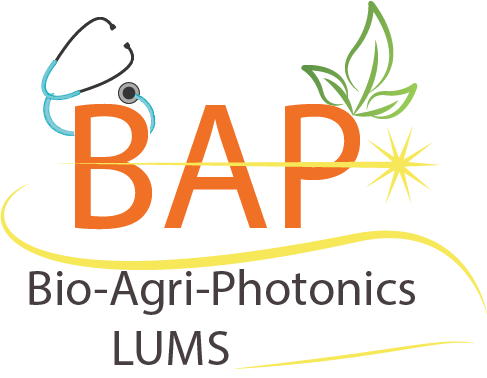
Biochemistry and Structural Biology (Antiviral Drug Discovery)
Dr. Syed Shahzad ul Hussan
The research of Biochemistry and Structural Biology Group is focused on antiviral drug discovery, creating knowledge for vaccine development and understanding the molecular level mechanism of viral infections to explore new drug targets. Glycan-protein interactions mediate diverse biological processes, particularly their role in viral pathogenesis is critically important. One of the main areas of our research is to target human-incorporated glycans present at the surface of viruses including HIV, Hepatitis C virus (HCV), dengue virus and SARS-CoV-2 to identify glycan-binding molecules that could block viral entry to the target cell. Moreover, our antiviral drug discovery endeavor incorporates identification and characterization of inhibitors of replication machinery of HCV and SARS-CoV-2 that involves the polymerase and helicase enzymes and non-structural protein 5a (in case of HCV) particularly targeting drug resistant mutants. We are using basic molecular biology, biochemistry and cell culture techniques along with cutting edge NMR based methodologies to understand the molecular recognition at atomic level.
In terms of vaccine research, we are working to understand the role of antibodies in spontaneous clearance of HCV, as around 30% of HCV infected individual clear the virus without any treatment. In this study we are trying to delineate the epitope specificity of antibodies present in the sera of such individuals and characterize structural feature of those linear epitopes in the antibody bound conformation. Such structural information could provide template for immunogen design as potential vaccine. For more detail, see the group’s website at (http://biolabs.lums.edu.pk/BSB).
For more detail, click here.
Biomedical Informatics & Engineering Research Laboratory (BIRL)
Dr. Safee Ullah Chaudhary
Recent advancements in instrumentation technologies have enabled researchers to accurately measure biomolecules participating in giving rise to complex biological phenomena such as cancer, diabetes and drug resistance. Towards developing a mechanistic understanding of such complex biomolecular processes and to decipher the exact role of specific biomolecular entities within them, data integrative approaches can be quite helpful. The Biomedical Informatics & Engineering Research Laboratory (BIRL) at LUMS, Pakistan, aims to address such bio-medical informatics challenges by leveraging data integrative approaches that cut across disciplines. Specifically, we develop mathematical models of multifactorial systems, data analysis pipelines, and simulation software. Current themes of research at BIRL span (i) Systems Biology, (ii) Proteogenomics, (iii) Health Informatics, and (iv) Targeted Drug Development for "Scientific Wellness".
Bioorganic and Medicinal Chemistry (BMC)
Dr. Muhammad Saeed
The Bioorganic and Medicinal Chemistry (BMC) performs multidisciplinary research at the interface of chemistry and biology. Our vision and mission is to develop and train future leaders that could use the scientific knowledge and skills of organic chemistry to unravel challenging problems of biological sciences and medicine. Currently, our team is busy understanding mechanisms by which diseases (viral/cancer) initiate, followed by investigating the strategies by which the pathogenic development can be intervened using small organic compounds. Thus, we design, synthesize, and biologically characterize small organic molecules as potential therapeutic agents against dengue, HCV, SARS-CoV-2 and breast cancer cells. We train undergrad and graduate student in the art of organic synthesis, computational drug designing, and biochemical assays.
Cancer Therapeutics Lab
Dr. Amir Faisal
Apart from cancer therapeutics, we are also undertaking some basic research to decipher mechanisms underlying stem cell differentiation and epigenetic control of gene expression in collaboration with colleagues in the biology department. Trophoblast stem cells are involved in the formation of the placenta and differentiate into polyploid giant cells for implantation of the embryo into the mother’s uterus. Defects in trophoblast giant cells result in developmental abnormalities such as miscarriages. We are utilizing next-generation sequencing and high throughput screening to identify genes involved in the differentiation of trophoblast stem cells into giant cells. Similarly, we are using a reporter assay and inhibitors of various signalling proteins to identify epigenetic regulators of gene expression.
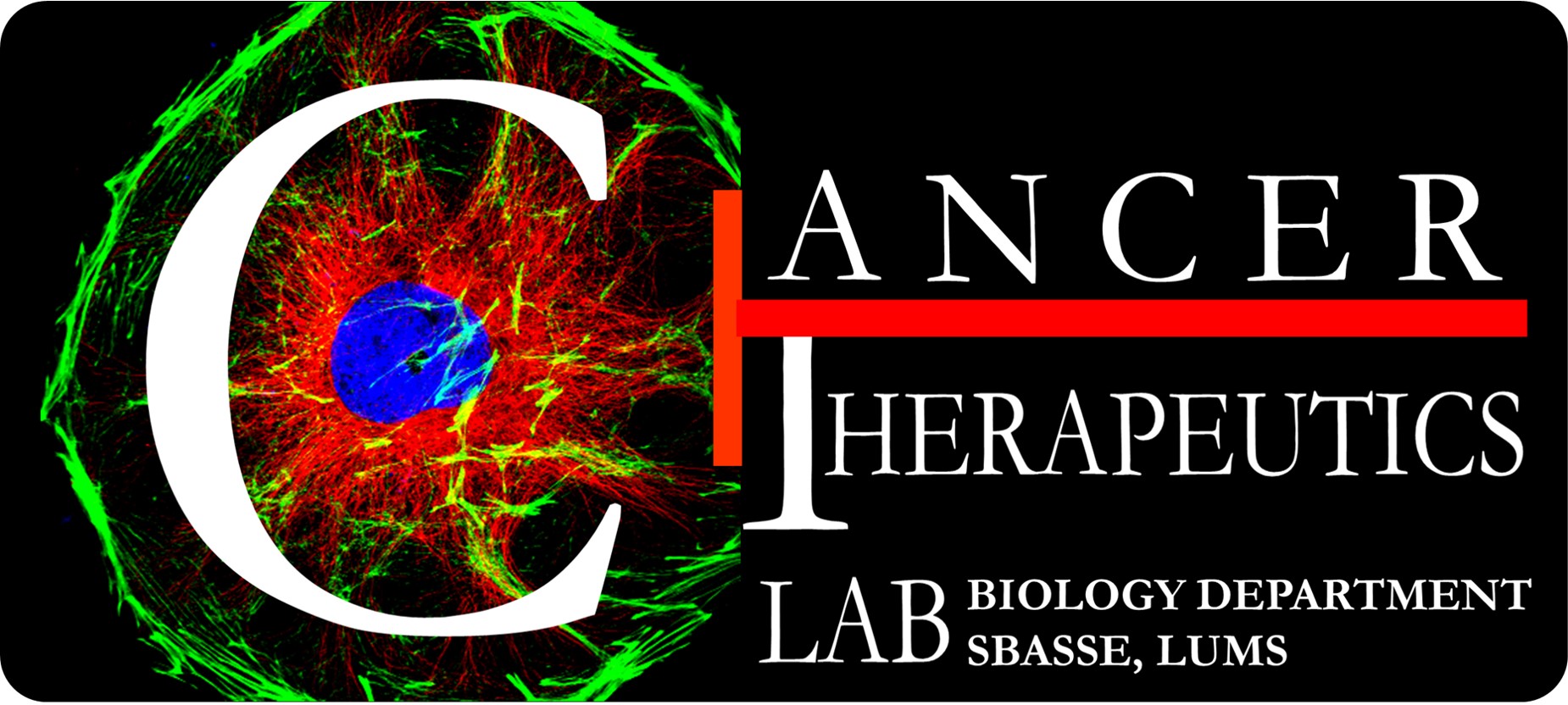
Cloud Computing Research Lab
Dr. Basit Shafiq
The emerging cloud and edge-computing infrastructure provides new opportunities to develop next generation Internet-centered distributed applications that are autonomous, cooperative, adaptive, evolvable, emergent, and trustworthy. Examples of these Internet-centered distributed applications include business processes, data analytics workflows, and service mashups. These applications are architected and developed using computation, data, and storage resources available in cloud data centers and enterprise networks as well as a large number of edge systems or IoT devices. The overarching goal of our research group is to support development, execution, and management of such distributed applications using the resources available in the cloud and edge-computing environment. Specifically, we focus on addressing the following issues:
1. Distributed Business Process Development in the Services Cloud. A Business Process (BP) is a set of logically related activities performed to achieve a well-defined business outcome. In a service-oriented environment, these activities are performed by invoking Web services. Typically, BP development involves working with high-level process specifications, and manually elaborating these specifications into an implementation level workflow design which is then converted into executable code. This is a very elaborate process requiring substantial manual effort and investment in the IT infrastructure, personnel and resources. This is specifically challenging for small and medium enterprises, which often do not have adequate resources for coding, administration, and hosting of their BPs. Cloud infrastructure and service-oriented middleware can be leveraged for rapid and cost-effective development of BPs for such organizations.
We have developed an integrated framework that enables an organization to compose, deploy, and execute its BPs using open source components or Web services available in the cloud. This framework makes use of the knowledge of existing BPs in a given domain to learn common execution patterns of different types of BPs and uses the learned patterns for composing a given type of BP for an organization based on its requirements. Our framework also generates executable BP code that can be deployed on any process execution engine. Currently, we are working on extending this framework to support the development and management of distributed applications and workflows that require real-time data processing, low latency, and high reliability. Additionally, we are interested in developing automated approaches for the detection and removal of faults and errors in such applications.
2. Security and Privacy. Internet-centered distributed applications often require access to data and resources distributed across multiple organizational domains. However, there is a growing concern for security and privacy of data. The traditional security and privacy solutions designed for enterprise-wide environment cannot work for the applications running in the highly distributed cloud and edge-computing environment because of the lack of trust among the different entities as well as the diverse security and privacy requirements. Our research work focusses on addressing this trust issue by developing blockchain-based auditable mechanisms for security and access control enforcement for distributed business processes and workflows that span multiple organizational domains. In addition, we have been working on developing approaches for privacy-preserving analysis and sharing of data in a distributed environment.
Computational Physics
Dr. Muhammad Faryad
Over the last 10 years, we have worked on specific questions in computational physics. Most of my work has been on computational modelling of electromagnetic phenomenon looking for solutions of Maxwell equations to understand the properties of materials and nature of electromagnetic waves at the interfaces of different materials. Our focus has been on the basic questions surrounding surface optical waves that are guided by interface of complex materials that are nanoengineered for desired properties for applications in optical sensors, solar cells, and design of materials. Since most of the modern optical devices feature the use of complex materials and metamaterials that are anisotropic at the optical scale, the numerical results have helped us to propose designs of highly sensitive and more reliable plasmonic optical sensors, and novel designs of solar cells and antireflection coatings for solar cells to enhance light absorptions and trapping. We are now focusing on broader questions in computational physics. The immediate areas that have profound questions to explore are (i) the complexity of different problems solved using classical or quantum computers, (ii) the fundamental limits on computing algorithms for various classes of problems allowed by the physics of computing devices, and (iii) the theory of computing and learning. These research areas are of utmost importance in advancing the capabilities of our existing classical computers in solving those problems that are otherwise hard using usual deterministic algorithms, and to clearly define the role of under-development quantum computers. With the advent of more and more powerful computing devices and new computing regimes, especially those that employ quantum physics, and knowledge of neural networks have opened up new avenues for not only doing computations more efficiently but also allow using it for discovering new patterns and relations between different variables when basic scientific theories are applied to more complex systems.
Computer Vision and Graphics Lab
Dr. Murtaza Taj
مشینی بصارت سے مراد کمپیوٹر میں تصاویر سے معلومات اخذ کرنے کی استعداد پیدا کرنا ہے۔ لمز کے سکول برائے سائنس و انجینئرنگ کے شعبہ کمپیوٹر سے وابستہ تجربہ گاہِ مشینی بصارت، پاکستان کی صفِ اوّل کی تحقیقی تجربہ گاہ ہے، جہاں محقیقین یکسوئی کے ساتھ تحقیق و تدریس کے عمل میں کوشاں ہیں۔ اس تجربہ گاہ میں لکھے گئے تحقیقی مقالوں کو عالمی سطح پر پزیرائی ملی ہے۔ دوسری جانب، یہاں پر پاکستان کے سماجی مسائل کے حوللے سے تکنیکی کاوشیں بھی جاری ہیں
Electronics and Embedded Systems Lab (EESL)
Dr. Muhammad Adeel Pasha
Dr. Shahid Masud
The main focus of this research cluster is to explore customized hardware, software and co-design solutions for embedded systems. The development of high-speed customized as well as reconfigurable and programmable hardware has made it possible that many operations of conventional high performance and/or low power applications can be implemented in the form of reusable Silicon IP cores and associated software code. This not only reduces design time and cost by orders of magnitude but enables manufacturers to maintain a balanced inventory. Important contemporary applications in which these modern system design techniques are being investigated at EESL include Deep Neural Networks (DNNs), Resource-aware IoT platforms, Biomedical Circuits and Systems, Hardware Security, Next-Generation Communication platforms, etc.
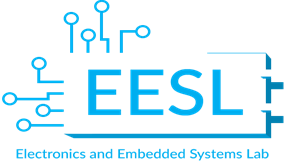
Energy and Power Systems Cluster
Prof Nauman Zaffar
Dr Hassan Abbas Khan
Energy and Power Systems Cluster (EPSC) has a strong R&D focus on renewable energy generation, processing, conservation and optimization with a primary focus on developing countries.
Various research and development projects include:
- Solar PV based DC distribution grid for Rural Electrification
- Smart storage solutions using lithium batteries
- Motor drives for energy conservation & optimization
- Grid Integration of renewable energy resources
- Smart homes with efficient power flow control and smart metering infrastructure development
- Energy-efficient lighting along with audit and thresholding
This cluster led by Prof Nauman Ahmed Zaffar and Dr Hassan Abbas Khan also has a strong publication record in the area of energy and power with over 50 research papers (Journals and Conferences) in the last 5 years. Three power electronics-based startups and multiple patents have also come out along with collaborative development with the industry.
Energy Informatics Group
Dr. Naveed Arshad
The Energy Informatics Group (EIG) carries out interdisciplinary research in the area of renewable energy analytics, electric vehicles, smart grids, and energy efficiency. The broader goal of EIG is to help Pakistan use 100% renewable sources for generating electricity by 2050. To this end, the group carries out research in short, medium and long term forecasting of energy demand, renewable energy generation forecasting for wind and solar resources, demand side management in agricultural, residential and industrial sectors, energy efficiency and renewable energy integration in already built environments, improving energy distribution through soft load shedding, detecting non-technical losses in energy distribution systems and other related topics. EIG also works with governmental agencies to develop evidence-based policy recommendations for long term renewable energy plan for Pakistan. EIG has also initiated start-ups in the area of energy informatics and electric vehicles.
Energy Materials
Dr. Ali Rauf
The Energy Material Research Group focuses on developing materials for sustainable energy applications. Our work includes designing new photocatalytic systems, creating heterostructure-based composites, and enhancing electrochemical catalysts. Using first-principle calculations, we aim to improve the efficiency of energy conversion and storage technologies.

Energy Systems & Simulation Lab
Dr. Muhammad Shoaib
My research work is focused on electrochemical energy storage technology in rechargeable batteries, their reaction mechanism and strategies to improve their capacity. The eventual goal is to develop a better understanding of battery chemistry, improve their charge storage capability and finally reduce the cost per unit energy stored.
Green Engineering and Circular Economy
Dr. Tauqeer Abbas
We develop green processes and investigate industrial and societal problems in the context of circular economy.
Epigenetics and gene regulation
Dr. Muhammad Tariq
Our body contains more than two hundred different cell types which are responsible for development of complex organs like heart, kidney, liver, eyes, brain etc. All these cell types originate form single cell i.e. a fertilized egg which contains genetic material (DNA) contributed by mother and father. Although, each cell type contains same basic genetic information (DNA) inherited from fertilized egg, yet their identity is different from one another. Specialization of cell types is linked to unique cell type specific gene expression patterns established during early development. In order to grow and maintain a specialized state, the particular expression profiles of genes need to be transmitted to daughter cells through successive mitotic divisions in all cell lineages, a phenomenon termed as cellular or transcriptional cellular memory. Impaired transcriptional memory severely affects development and invariably leads to diseases such as cancer. Genetic analyses have uncovered two groups of genes, the Polycomb Group (PcG) and the trithorax Group (trxG), responsible for maintaining transcriptional cellular memory. Epigenetics and gene regulation group, led by Dr. Muhammad Tariq, investigates how cellular identities are maintained by the Polycomb group (PcG) and trithorax group (trxG) proteins which are responsible for maintaining cell-type specific transcriptional memory. Our group is interested in deciphering the molecular mechanisms that lead to modulation of epigenetic information maintained by the PcG and trxG proteins in response to intrinsic as well as extrinsic environmental cues. Understanding the mechanistic pathways and factors involved in the modulation of PcG/trxG factors should enable us to answer questions such as how cell fates can be changed, how epigenetic information can be reprogrammed and how disease like cancer may arise. We have established the first epigenetics research laboratory in Pakistan which employs fruit fly (Drosophila melanogaster) as a model system. In a genome-wide RNAi screen, we have discovered more than 200 different genes that influence trxG mediated cellular memory (Umer et al, 2019; Epigenetics and Chromatin). We specifically aim to decipher cell signalling pathways linked to cellular memory governed by PcG/trxG paradigm. Additionally, we are keen to understand the role of epigenetic modifications such as DNA methylation and/or histone modifications together with PcG/trxG proteins in the etiology of some of the more prevalent diseases in Pakistan.
Functional Nanofibers Group
Dr. Salman Noshear Arshad
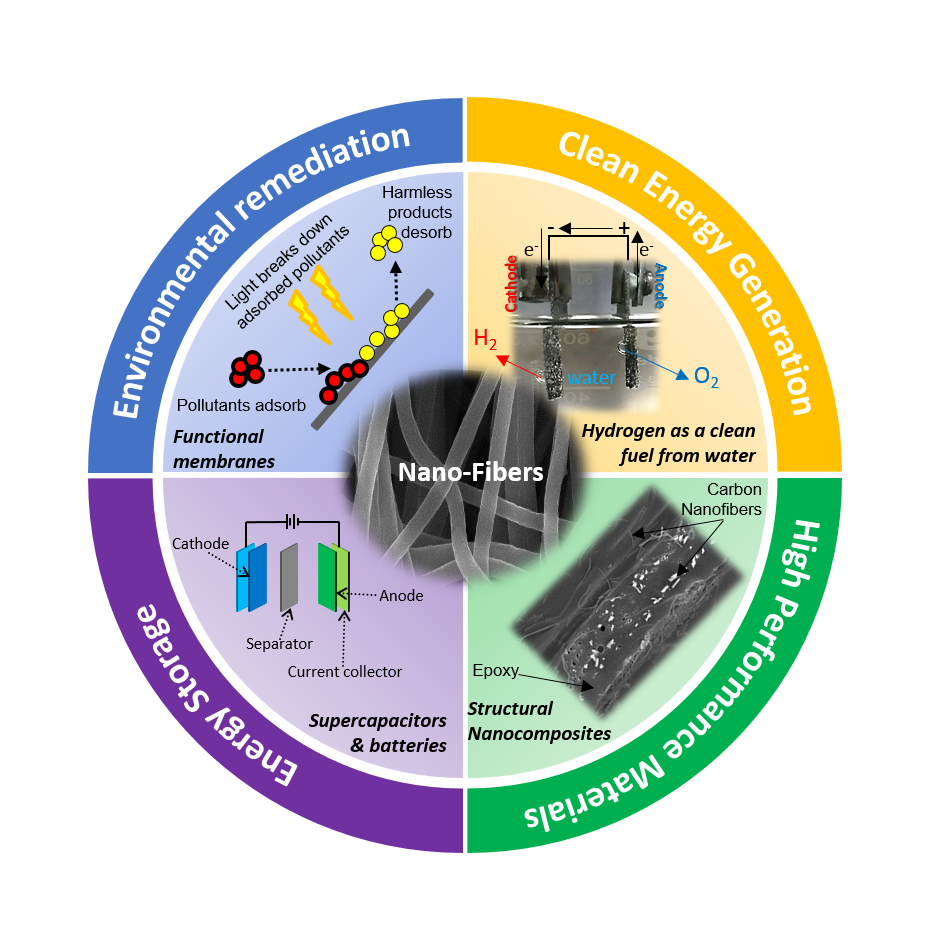
The Functional Nanofibers Group at LUMS mainly focuses on the use electrospinning to synthesize novel nanofibers and nanocomposites with tunable sizes, morphologies and properties.
Currently we are working on functional and porous nanofibers for water remediation, energy storage, biomedical, catalytic support, sensors and as reinforcement in nanocomposites with high strength and toughness. Moreover, the group has interest in in-situ electron microscopy for characterizing the mechanical response of materials at nanoscale and tailoring of the interfaces for maximum performance.
Functional Nanomaterials Group
Dr. Irshad Hussain
Functional Nanomaterials group focuses on the development of metal/metal oxide nanoparticles/nanoclusters with decent control over their size (from sub-nanometer to about 100 nm), shape and surface chemistry. The nanoparticles are used as such or as building blocks to develop new materials/nanocomposites for applications in renewable energy technologies (electrode materials for water splitting, CO2 conversion and energy storage), catalysis (nanocatalysis, electrocatalysis and photocatalysis), biomedical (drug delivery, biosensing and multidrug resistance) and environmental sciences (pollutants sensing and removal).

Knowledge and Data Engineering (KADE)
Dr. Asim Karim
The Knowledge and Data Engineering (KADE) lab in the Department of Computer Science conducts research in the areas of data mining, machine learning, and applied artificial intelligence. Its recent research directions include text analytics and natural language processing, deep learning models, Urdu and Roman Urdu processing, and bias-aware data science.
Laboratory for Emerging Devices & Technologies for Sustainability & Healthcare
Dr. Nauman Zafar Butt
Current Projects:
1) Agrivoltaic technologies for food-energy-water-nexus
2) Climate aware design and analysis of solar photovoltaic modules
3) Emerging technologies for single-junction/tandem bifacial solar cells
4) Microfluidic devices for biological cell counting based on the electrical impedance sensing
Laboratory for Quantum Technologies
Dr. Muhammad Sabieh Anwar
Research in our group revolves around different facets of magnetism. We investigate low field magnetic resonance, use optical techniques to probe magnetic and spintronic effects, and study how light interacts with quantum materials and nanostructures. We also build scientific instruments and test new measurement techniques.
Microbiology & Immunology Laboratory
Dr. Shaper Mirza
The laboratory of Microbiology and Immunology is dedicated to understanding the association of diabetes with respiratory tract infections caused by Streptococcus pneumoniae, which is a cause of at least 40% of total pneumonia infections and invasive pneumococcal disease. The research program is comprised of four major components which are as follows; i) Investigation of humoral immune response, which is critical for clearance of pneumococcal pneumonia, we are investigating the antibody response and antibody and complement mediated opsonophagocytosis of S. pneumoniae, using neutrophils from healthy donors, ii) Using human macrophage cell line (THP-1) and neutrophil cells lines (HL-60), projects are underway to understand signal transduction pathway and signaling molecules involved in impairment of bactericidal activity of neutrophils and macrophages, iii) Measurement of B cell response to pneumococcal polysaccharide pre and post vaccination, iv) Resistance in S. pneumoniae to antibacterial agents is growing at an exponential rates. A significant proportion of pneumococcal isolates are penicillin resistant, which is the drug of choice for treating pneumonia and invasive disease. Studies in this area are focused on alternative approaches to treatment of drug resistant pneumococci. Peptides from antibacterial human protein, lactoferrin are being used to determine their antibacterial potential.
Molecular Microbiology and Epidemiology
Dr. Shaper Mirza
The laboratory focuses on Immunologic and Molecular Mechanisms of pathogenesis in infections caused by a Gram-positive bacterium, Streptococcus pneumoniae. More specifically research is focused on understanding pathogenesis of S. pneumoniae in children and elderly. Towards that, the research in our laboratory follows immunologic pathways, molecules and processes involved in transition of S. pneumoniae from asymptomatic pneumococcal carriage to severe and often fatal pneumonia in children. Investigations are also underway to study the changing epidemiology of S. pneumoniae in response to increase in use of pneumococcal vaccine. Using bioinformatics tools, we are investigating changes in pneumococcal genome, in particular pneumococcal surface protein A, a highly heterogenous and immunogenic protein which is also a vaccine candidate and is found all strains of pneumococci. Antimicrobial resistance is a growing problem in pneumococci. Effect of vaccine on reduction in prevalence of antimicrobial resistant strains of pneumococci is expected, however, there is currently no data available in Pakistan demonstrating changes in prevalence of resistant strains in post-vaccine era. Studies are underway in collaboration with Children Hospital to measure the prevalence of antimicrobial resistance strain in carriage. Studies of pneumococcal infections in elderly, in particular elderly with comorbid conditions such as type 2-diabetes, are also an integral component of our research. Elderly with type 2-diabetes are significantly more susceptible to pneumococcal infections as compared to age and sex matched non-diabetes elderly. Infections in this group of population are severe and often fatal. Impairments in sentential cells of immune systems have been reported in those with type 2-diabetes. Our laboratory is investigating the affect of hyperglycemia, a characteristic of poorly controlled diabetes on phagocytic/bactericidal activity of neutrophils and macrophages and clearance of pneumococci by phagocytes in those with diabetes.
Numerics for Life (NumLife)
Dr. Mudassar Razzaq
In recent years, encouraging progress has been made in the numerical simulation of Fluid-Structure Interaction (FSI) problems and continues to be the focus of much attention. The significant applications in various areas considering an elastic or inelastic structure surrounded by or conveying a fluid can be found in the following broad engineering disciplines:
• Aerodynamics
• Aeroelasticity
• Civil engineering
• Biomechanics/Bioengineering
• Hemodynamics
• Meteorological phenomena
• Hydroelasticity
Such multi-physics problems ranging from water penetration of off-shore structures, modeling submarines motion, parachute modeling, the interaction of the various objects with the surroundings (air, water, structures), blood flow in arteries, environmental hazards, airfoil fluttering, rain, wind, floods involve more than one physical effect.
Challenges and Motivation: Fluid-structure interaction physical processes are very complex, nonlinear in nature and cannot be solved analytically. In bioengineering, modeling FSI in the blood circulatory system is a vast and complex mathematical subject. In fact, experimental setups are essential to provide reliable data. However, these are generally associated with enormous costs, which is why the demand for numerical simulations as a development tool is increasing rapidly.
Numerical solution for life (NumLife) is a research group that is formed to build a team of numerical computationist of various fields to address the tremendous problems in multidisciplinary fields e.g., in Bioengineering. This cross-disciplinary collaborative scientific research encompassing a diverse and challenging set of problems spread over the fields of Mathematics, Physics, Biology, and Computer Science.
Our research activities will use primarily the finite element-based tool FEATFLOW and various other software packages like ANSYS, FreeFEM, and COMSOL. Numlife research publications contribute to the scientific literature on FSI, Optimization, Benchmarking, Hemodynamics and similar.
Quantum control
Dr. Adam Zaman Chaudhry
Our research focuses on harnessing the power of realistic quantum systems. What are these `realistic’ quantum systems and why bother studying them? The fact is that although quantum mechanics is perhaps the most successful theory ever devised and has led to many technological breakthroughs such as transistors, lasers and magnetic resonance imaging, it has been realized that quantum mechanics can be harnessed to do much more - the possibilities are endless! For instance, the power of the quantum can be used for ultra-precise measurements, for unbreakable encryption in communication and even for making computers that will make a mockery of current supercomputers. Unfortunately, there is a major hurdle in the practical large-scale implementation of these new technologies - realistic quantum systems interact with their surroundings, thereby becoming classical, and no longer retain the quantum properties which make them so useful in the first place. Understanding the problem of such realistic ‘open’ quantum systems is thus a key problem in modern physics, with applications in quantum optics, chemical physics, condensed matter and nanotechnology, to name a few.
Click here to view the Research Statement.
Quantum Nanophotonics
Dr. Ata Ulhaq
The research group investigate physics of low dimensional structure with focus on nanoscale structures which exhibit quantum character. Research projects includes optimization of zero and two dimensional structures using valley physics and band engineering to realize room temperature quantum emitters and quantum switching devices. We are also interested in probing fundamental physics of phonons, excitons and electron-photon interactions in these materials systems.
Rahman's Organic Chemistry (ROC)
Dr. Rahman Shah Zaib Saleem
The research group of Dr. Rahman Shah Zaib Saleem is focused on the applications of organic chemistry in the fields of drug discovery and materials.
In the Drug Discovery arena, the group has expertise in the discovery of lead molecules for various cellular targets. Our specialties include hit and lead generation, lead optimization, medicinal chemistry, organic synthesis and methodology, structure-based drug design, data analysis, natural product isolation and structure elucidation.
On the materials front, we are working on the novel metal-free organic dyes for solar cells and organic scaffolds for metal-organic frameworks (MOFs).
Smart Materials and Interfaces
Dr. Basit Yameen
Exploring the exciting opportunities offered by the wonderful world of materials chemistry, our current research activities encompass a range of fundamental and applied endeavors centered around developing functional polymers, hybrid smart materials, and interfaces. Our group is currently working on the development of polymers and nanomaterials based smart materials for biomedical applications (nanomedicine and structural biology), bio and chemical sensing (biomarkers and environmental contaminants), alternative energy technologies (solar cells, fuel cells, and batteries), environmental remediation, and antiviral and antibacterial surfaces. We also work in close collaboration with for-profit and not-for-profit organizations for realizing a sustainable future.
Tariq Lab - Epigenetics and Development
Dr. Muhammad Tariq
Our lab investigates how cells remember their identities which are established during early embryonic development. Answers to this fundamental question are crucial to understand onset of disease like cancer in which cells essentially lose their identity. When we are just a clump of few hundred cells in our mother's womb, fates of different cell types are determined by setting up differential gene expression patterns. These cell type specific gene expression patterns are transmitted to all future progenies of cells through successive cell divisions in different cell lineages which is indeed linked to how cells remember their identity and this process is also referred to as epigenetic cell memory. Epigenetic cell memory is governed by two groups of genes; namely Polycomb group (PcG) and Trithorax group (trxG) genes which act at the level of chromatin to maintain cell type specific gene expression patterns. The PcG genes maintain genes in silent or OFF (inactive) state while trxG genes act as anti-silencers and thus both groups contribute to the maintenance of identity of different cell types throughout our life. The long term goal of our research is to understand how PcG/trxG paradigm is linked to cell signaling and how together they contribute to epigenetic inheritance of cell fates during development. We use genetic, molecular and biochemical tools to study this fundamental question in fruit flies, our favorite Drosophila melanogaster model system. Our functional genomics approach has led to discovery of new anti-silencing genes that contribute to maintenance of gene activation by trxG in flies (Umer et al 2019).
Technology for People Initiative
Dr. Murtaza Taj
Technology for People Initiative (TPI) is an applied research centre at the Lahore University of Management Sciences (LUMS) in Lahore, Pakistan. It is focused on designing innovative, low-cost, practical technology solutions for problems in the public sector.
Functional Materials and Optoelectronic Devices
Dr. Ammar Khan
A research group combining elements from optical microscopy, spectroscopy, soft matter physics and 2-D materials to make functional devices. Examples of our ongoing projects include perovskite solar cells, liquid crystal based bio-sensor development and switchable single-photon quantum light emitters.
Intelligent Machines & Sociotechnical Systems Lab
Dr. Hassan Jaleel
The iMaSS Lab conducts research at the intersection of applied mathematics, dynamical systems, microeconomic theory, and social sciences with applications in swarm robotics, human decision modelling in societal settings, and sociotechnical systems. Our objective is to develop solid theoretical foundations for complex problems that are motivated from practical systems involving machines or humans or a combination of both. The research at the iMaSS lab has three main themes and applications domains: Multi-robot systems, human decision and behavior modeling, and modeling and design of sociotechnical systems.
Microwave Antennas and Circuits Research(MAC) Lab
Dr. Wasif Tanveer Khan
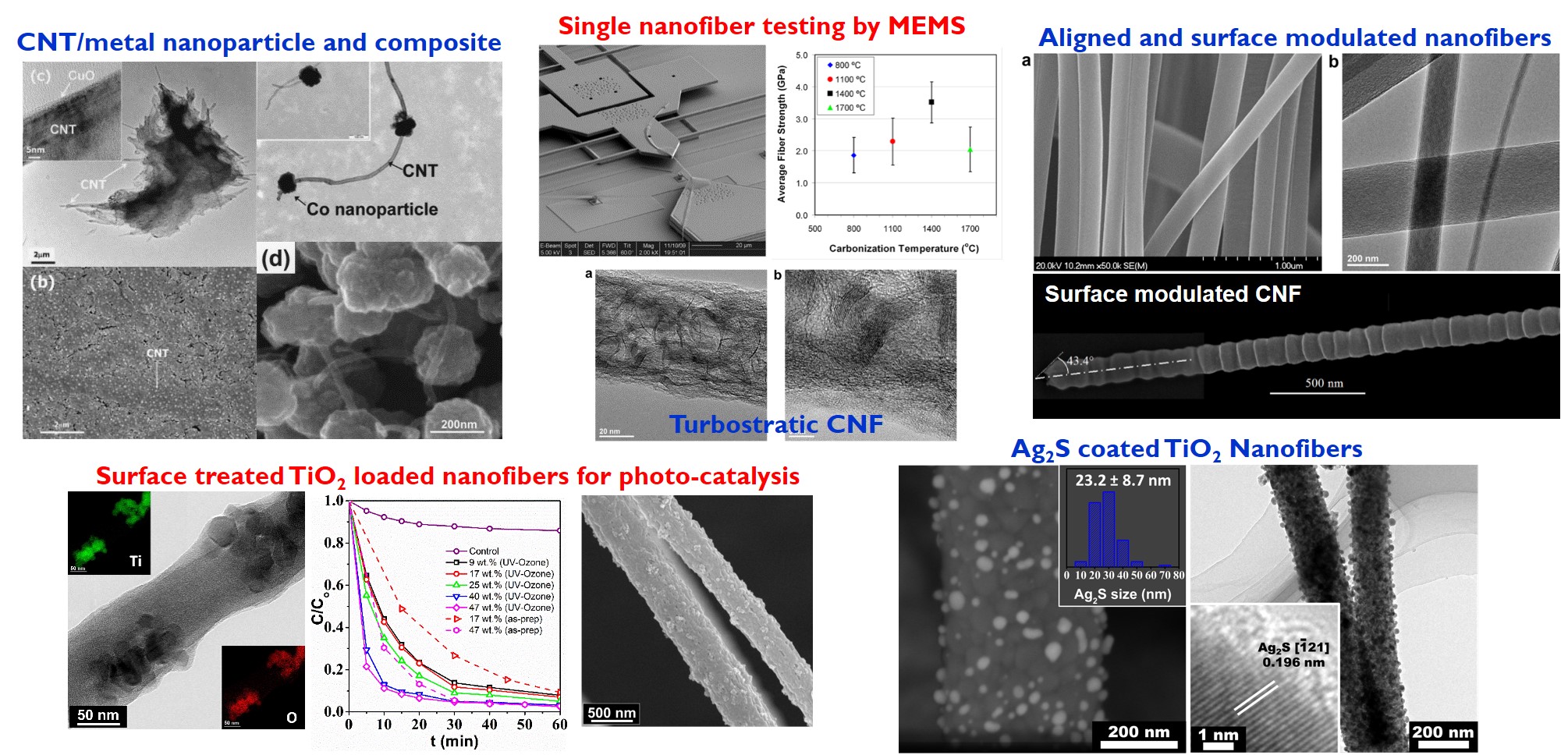
Microwave Antennas and Circuits (MAC) Research Lab is led by Dr. Wasif Tanveer Khan. MAC Lab is developing sensors(Food spoilage Detection, Gas etc), power sources, and various other devices and components using printed electronics, which will enable roll to roll low cost printing of electronics. These printed devices and components will embed intelligence in various systems and infrastructures at low cost. The lab also focuses on the development of emerging technologies in the domain RF/Microwave Circuits and Antenna Design for 5G/6G communication, energy harvesting circuits for IoT devices, and reconfigurable RF front ends for next generation communication systems, and radars.
The lab is well equipped with state of the art RF and Microwave Measurement Equipment up to 40 GHz, LPKF S103(used for rapid prototyping of PCBs),and Dimatix inkjet printer used for printed electronics. Like all other labs in SSE, MAC lab also has access to Makers Lab(set of five different labs), which can be used for rapid prototyping using laser cutters, PCB manufacturing, tools used for wood working, CNC machines, and 3D printers. Over the last 6 years, the lab has published around 30 research papers in peer reviewed conferences and journals and filed 5 EU and US patents. One patent application is in the process of being submitted in Pakistan Patent Office. One US patent has been approved. MAC lab has collaborated with a few public and private sector organizations in Pakistan and a few international companies such as Sony GmbH and EBE GmbH.

